Search Result
Results for "
HIV-2
" in MedChemExpress (MCE) Product Catalog:
3
Isotope-Labeled Compounds
| Cat. No. |
Product Name |
Target |
Research Areas |
Chemical Structure |
-
- HY-16776
-
|
Festinavir; BMS-986001; OBP-601
|
HIV
Reverse Transcriptase
Nucleoside Antimetabolite/Analog
|
Infection
|
|
Censavudine (OBP-601; BMS-986001), a nucleoside analog, is a nucleoside reverse transcriptase inhibitor. Censavudine is a potent HIV inhibitor with EC50 ranges from 30 nM to 81 nM and 450 nM to 890 nM for HIV-2 and HIV-1, respectively [2]. Censavudine is a click chemistry reagent, it contains an Alkyne group and can undergo copper-catalyzed azide-alkyne cycloaddition (CuAAc) with molecules containing Azide groups.
|
-
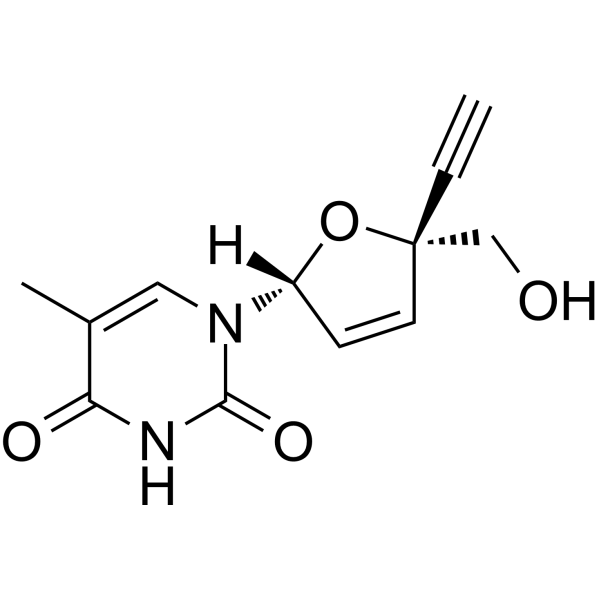
-
- HY-19509
-
|
|
Reverse Transcriptase
HIV
|
Infection
|
|
IQP-0528 is a highly potent nonnucleoside reverse transcriptase inhibitor (NNRTI). IQP-0528 shows nanomolar activity against both HIV-1 and HIV-2, with an HIV-1 EC50 of 0.2 nM and an HIV-2 EC50 of 100 nM .
|
-
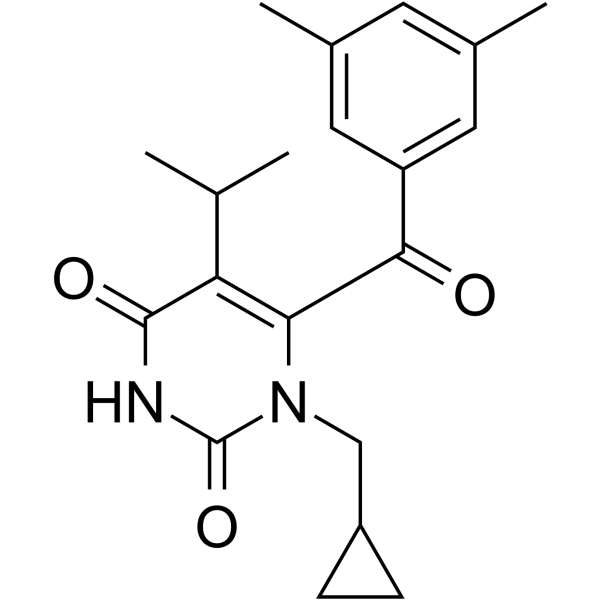
-
- HY-P4352
-
|
|
HIV
|
Others
|
|
HIV-2 Peptide is a polypeptide that can be found by peptide screening. Peptide screening is a research tool that pools active peptides primarily by immunoassay. Peptide screening can be used for protein interaction, functional analysis, epitope screening, especially in the field of agent research and development .
|
-
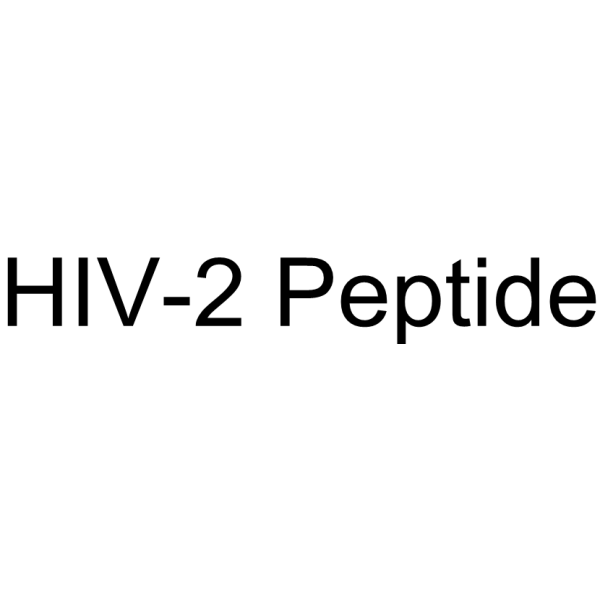
-
- HY-P3980
-
|
|
HIV Protease
|
Infection
|
|
HIV-1, HIV-2 Protease Substrate is the substrate of HIV-1, HIV-2 protease. And there are 4 residues for conservative substitutions of the substrate binding residues of HIV-1 and HIV-2 protease .
|
-
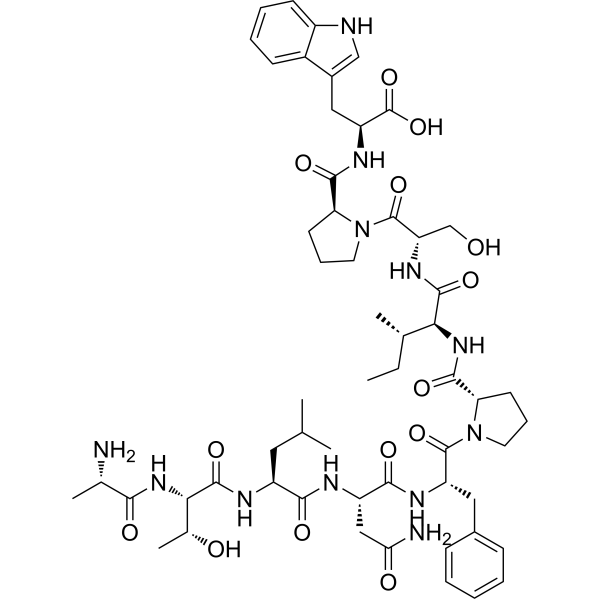
-
- HY-130050
-
|
BBM-928 A
|
Antibiotic
HIV
|
Infection
Cancer
|
|
Luzopeptin A (BBM-928 A) is an actinoleukin-like antitumor antibiotic. Luzopeptin A is a bifunctional DNA intercalator which can interact with isolated DNA molecules. Luzopeptin A induces an unwinding-rewinding process of the closed superhelical PM2 DNA. Luzopeptin A is active against HIV-1 and HIV-2 reverse transcriptase with IC50s of 7 nM and 68 nM for HIV-1 RT and HIV-2 RT, respectively [2].
|
-
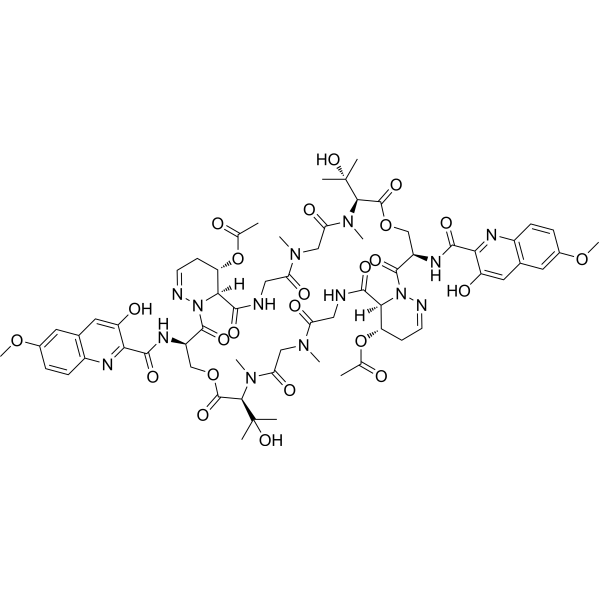
-
- HY-153005
-
|
|
HIV
|
Infection
|
|
(2RS)-FPMPA can be used for synthesis of antiretroviral agents against HIV-1 and HIV-2 .
|
-
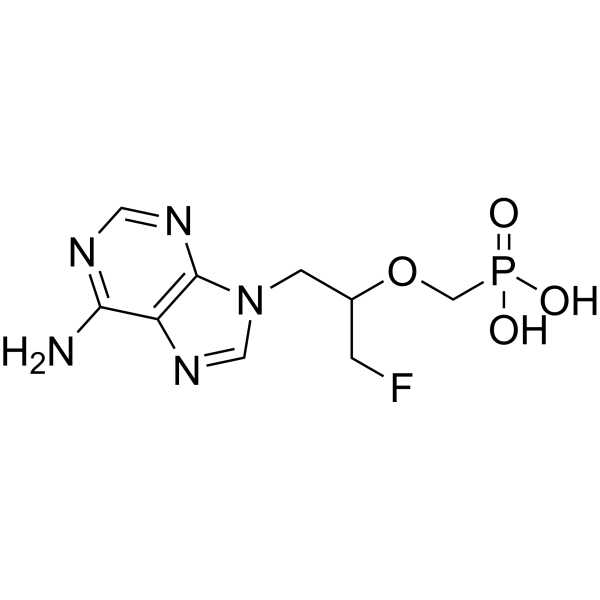
-
- HY-114731
-
|
|
HIV
|
Infection
|
|
Adenallene, a nucleoside analogue, is an anti-HIV compound. Adenallene inhibits replication and cytopathic effect of HIV-1 and HIV-2 .
|
-
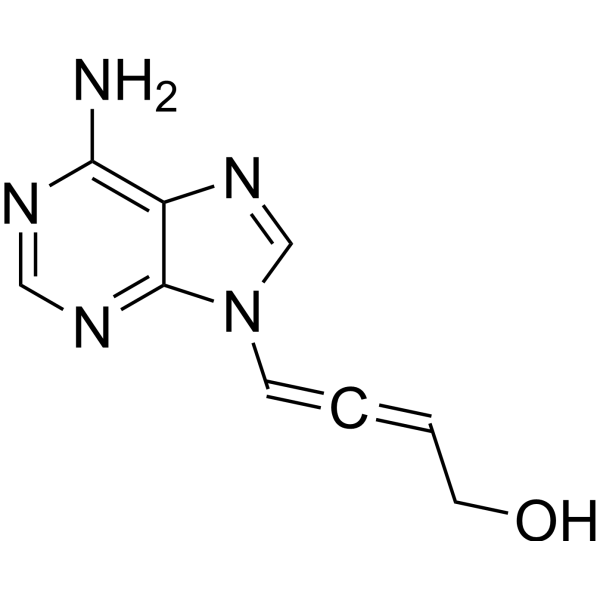
-
- HY-19378
-
|
PC 815
|
HIV
|
Infection
|
|
MIV-150 is a nonnucleoside reverse transcriptase (NNRT) inhibitor, blocking HIV-1 and HIV-2 infections, with an EC50<1 nM against HIV-1/HIV-2MN.
|
-
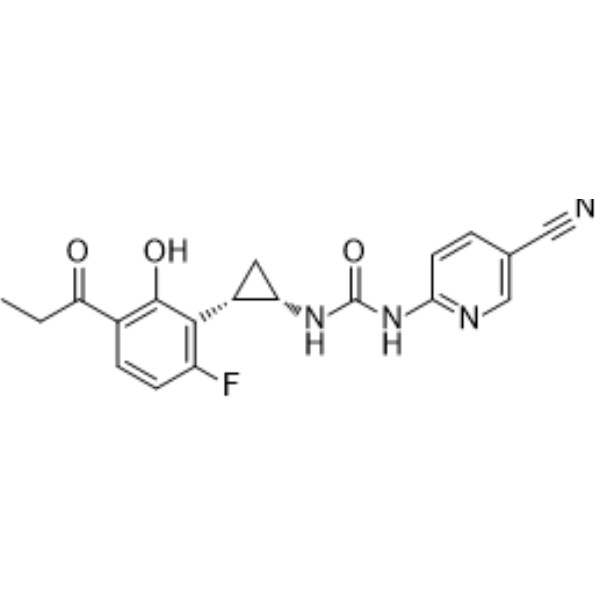
-
- HY-14882A
-
|
TAK-652 Mesylate; TBR-652 Mesylate
|
CCR
HIV
|
Infection
Inflammation/Immunology
Endocrinology
|
|
Cenicriviroc Mesylate (TAK-652 Mesylate) is a dual CCR2/CCR5 antagonist, also inhibits both HIV-1 and HIV-2, and displays potent anti-inflammatory and antiinfective activity.
|
-

-
- HY-146009
-
|
|
HIV
Enterovirus
|
Infection
|
|
AL-470 is a potent antiviral agent with EC50 values of 0.27, 0.63, and 0.35 µM against HIV-1, HIV-2, and EV-A71, respectively .
|
-
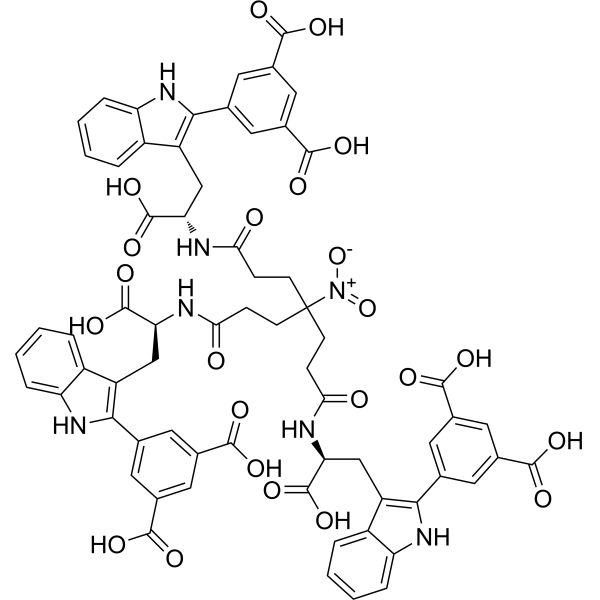
-
- HY-14882
-
|
TAK-652; TBR-652
|
CCR
HIV
|
Infection
Endocrinology
|
|
Cenicriviroc (TAK-652) is an orally active, dual CCR2/CCR5 antagonist, also inhibits both HIV-1 and HIV-2, and displays potent anti-inflammatory and antiinfective activity .
|
-

-
- HY-N10776
-
|
|
HIV
|
Infection
|
|
Kaempferol-3-O-(6′′-galloyl)-β-glucopyranoside is a glucopyranoside. Kaempferol-3-O-(6′′-galloyl)-β-glucopyranoside inhibts HIV-2 RNase H with an IC50 value of 5.19 μM .
|
-
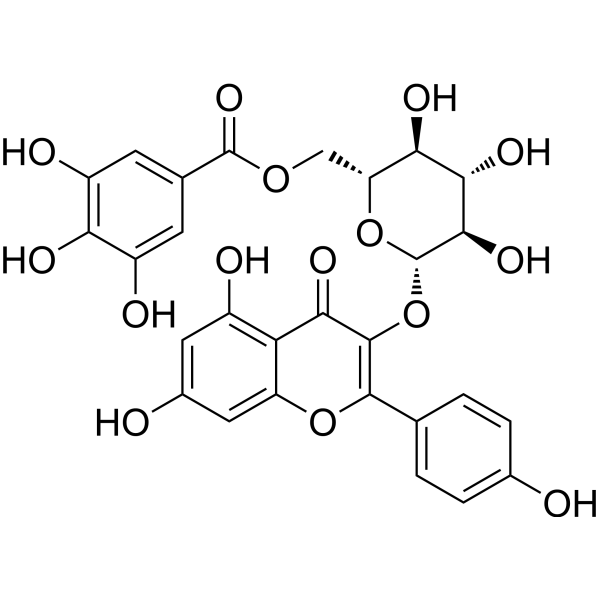
-
- HY-15355
-
|
R 89439
|
Reverse Transcriptase
HIV
|
Infection
|
|
Loviride (R 89439) is a non-nucleoside reverse transcriptase inhibitor (NNRTI), with an IC50 of 0.3 µM for reverse transcriptase from HIV-1. Loviride (R 89439) inhibits HIV-1, HIV-2 and SIV replication in MT-4 cells .
|
-
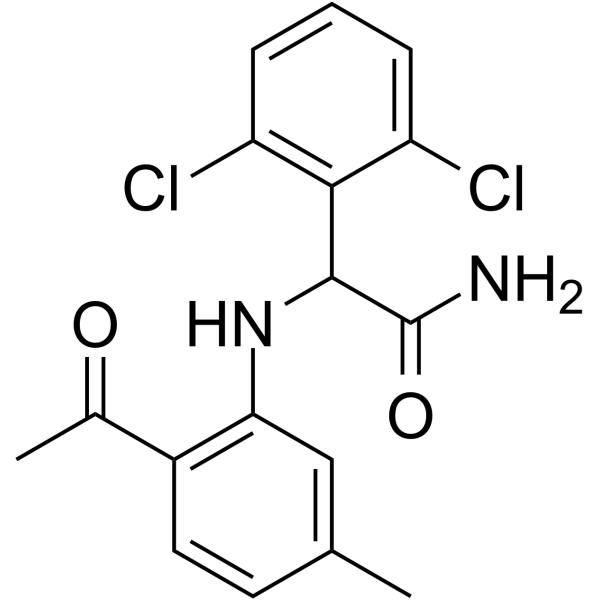
-
- HY-10046
-
Plerixafor
Maximum Cited Publications
62 Publications Verification
AMD 3100; JM3100; SID791
|
CXCR
HIV
|
Infection
Inflammation/Immunology
Endocrinology
Cancer
|
|
Plerixafor (AMD 3100) is a selective CXCR4 antagonist with an IC50 of 44 nM. Plerixafor, an immunostimulant and a hematopoietic stem cell (HSC) mobilizer, is an allosteric agonist of CXCR7. Plerixafor inhibits HIV-1 and HIV-2 replication with an EC50 of 1-10 nM [2] .
|
-
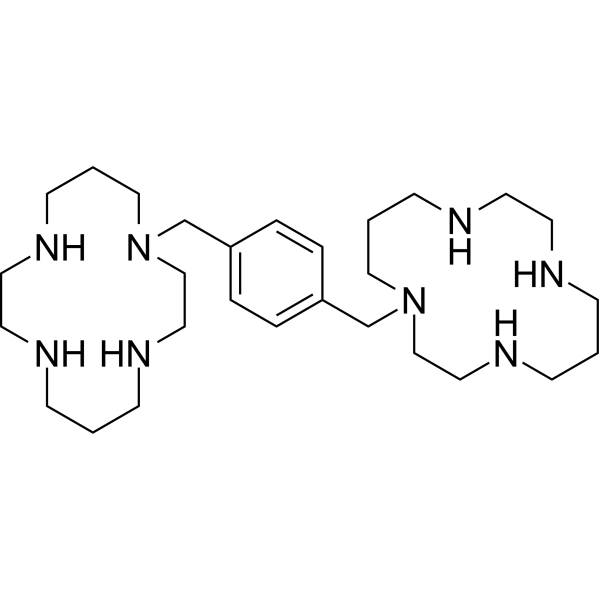
-
- HY-163085
-
|
|
HIV
|
Infection
|
|
HIV capsid modulator 1(compound 21a2) is a potent HIV capsid modulator. HIV capsid modulator 1 is a quinazolin-4-one-bearing phenylalanine derivative. HIV capsid modulator 1 has antiviral activities against both HIV-1 and HIV-2 .
|
-

-
- HY-100212
-
|
AG1776; KNI-764
|
HIV
HIV Protease
|
Infection
|
|
JE-2147 (AG1776) is a potent dipeptide protease inhibitor with a Ki of 0.33 nM for HIV-1 protease. JE-2147 has effective activities against a wide spectrum of HIV-1, HIV-2, simian immunodeficiency virus, and various clinical HIV-1 strains in vitro [2].
|
-
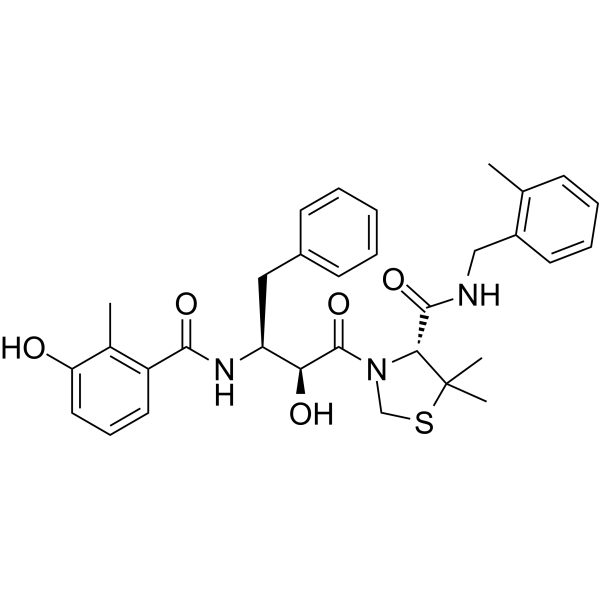
-
- HY-B0116
-
-

-
- HY-B0116A
-
-
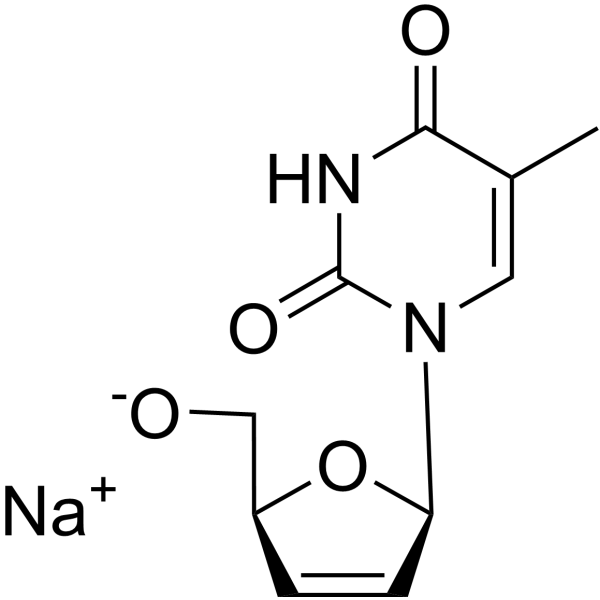
-
- HY-10046S
-
|
|
Isotope-Labeled Compounds
CXCR
HIV
|
Infection
Inflammation/Immunology
Endocrinology
Cancer
|
|
Plerixafor-d4 is the deuterium labeled Plerixafor. Plerixafor (AMD 3100) is a selective CXCR4 antagonist with an IC50 of 44 nM. Plerixafor, an immunostimulant and a hematopoietic stem cell (HSC) mobilizer, is an allosteric agonist of CXCR7. Plerixafor inhibits HIV-1 and HIV-2 replication with an EC50 of 1-10 nM[1][2][3][4][7].
|
-

-
- HY-W028350
-
|
|
HIV
DNA/RNA Synthesis
|
Infection
|
|
NSC727447 is an inhibitor of ribonuclease H (Rnase H) of HIV-1 and HIV-2. NSC727447 has little activity against E. coli RNase H, but great selectivity over human Rnase H, with IC50s value of 2.0 μM, 2.5 μM, 100 μM, 10.6 μM, respectively .
|
-
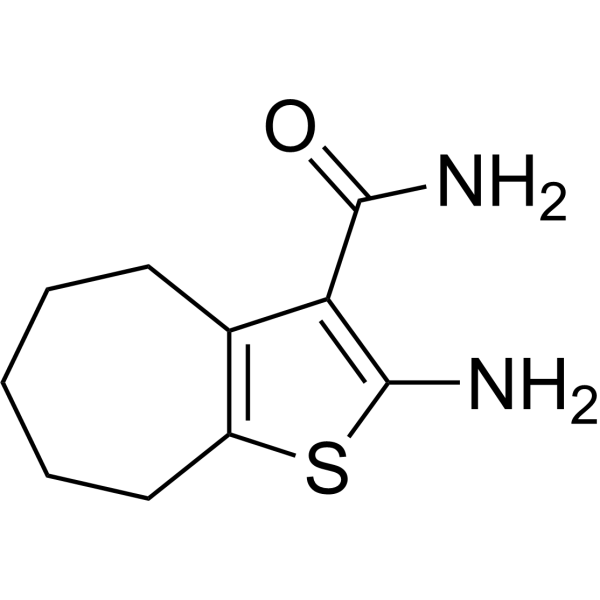
-
- HY-10046R
-
|
|
CXCR
HIV
|
Infection
Inflammation/Immunology
Endocrinology
Cancer
|
|
Plerixafor (Standard) is the analytical standard of Plerixafor. This product is intended for research and analytical applications. Plerixafor (AMD 3100) is a selective CXCR4 antagonist with an IC50 of 44 nM. Plerixafor, an immunostimulant and a hematopoietic stem cell (HSC) mobilizer, is an allosteric agonist of CXCR7. Plerixafor inhibits HIV-1 and HIV-2 replication with an EC50 of 1-10 nM [2] .
|
-

-
- HY-B0116S
-
-
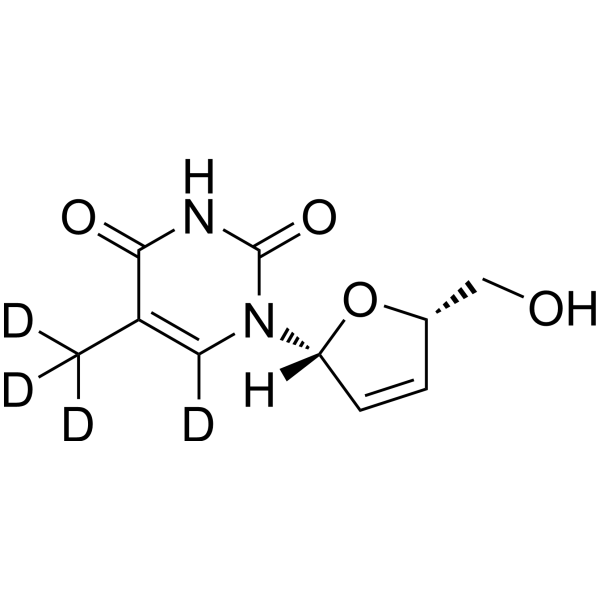
-
- HY-B0116R
-
|
|
Reverse Transcriptase
HIV
Nucleoside Antimetabolite/Analog
NOD-like Receptor (NLR)
Autophagy
Apoptosis
|
Infection
|
|
Stavudine (Standard) is the analytical standard of Stavudine. This product is intended for research and analytical applications. Stavudine (d4T) is an orally active nucleoside reverse transcriptase inhibitor (NRTI). Stavudine has activity against HIV-1 and HIV-2. Stavudine also inhibits the replication of mitochondrial DNA (mtDNA). Stavudine reduces NLRP3 inflammasome activation and modulates Amyloid-β autophagy. Stavudine induces apoptosis [2] .
|
-

-
- HY-P1065
-
|
|
Apelin Receptor (APJ)
HIV
|
Infection
Cardiovascular Disease
Metabolic Disease
|
|
Apelin-36(rat, mouse) is an endogenous orphan G protein-coupled receptor APJ agonist. Apelin-36(rat, mouse) binds to APJ receptors with an IC50 of 5.4 nM, and potently inhibits cAMP production with an EC50 of 0.52 nM. Apelin-36(rat, mouse) blocks entry of some HIV-1 and HIV-2 strains into NP-2/CD4 cells expressing APJ [2].
|
-

-
- HY-P1066
-
|
|
Apelin Receptor (APJ)
HIV
|
Infection
|
|
Apelin-17(human, bovine) is an endogenous orphan G protein-coupled receptor APJ agonist. Apelin-17(human, bovine) binds to human APJ receptors expressed in HEK 293 cells (pIC50=9.02). Apelin-17(human, bovine) inhibits the entry of some HIV-1 and HIV-2 into the NP2/CD4 cells expressing APJ [2] .
|
-
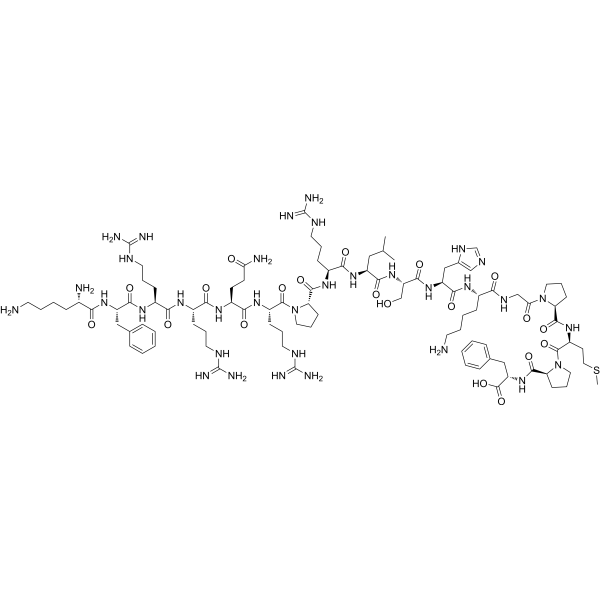
-
- HY-P1066A
-
|
|
HIV
Apelin Receptor (APJ)
|
Infection
|
|
Apelin-17(human, bovine) TFA is an endogenous orphan G protein-coupled receptor APJ agonist. Apelin-17(human, bovine) TFA binds to human APJ receptors expressed in HEK 293 cells (pIC50=9.02). Apelin-17(human, bovine) TFA inhibits the entry of some HIV-1 and HIV-2 into the NP2/CD4 cells expressing APJ [2] .
|
-
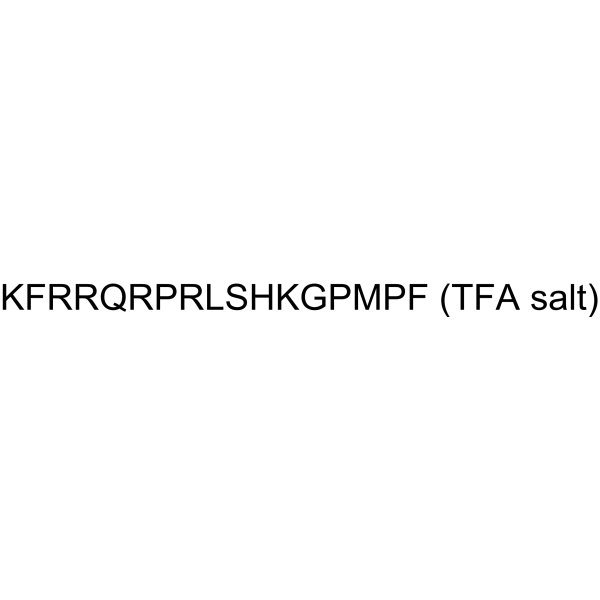
-
- HY-P1065A
-
|
|
HIV
Apelin Receptor (APJ)
|
Infection
Cardiovascular Disease
Metabolic Disease
|
|
Apelin-36(rat, mouse) TFA is an endogenous orphan G protein-coupled receptor APJ agonist. Apelin-36(rat, mouse) TFA binds to APJ receptors with an IC50 of 5.4 nM, and potently inhibits cAMP production with an EC50 of 0.52 nM. Apelin-36(rat, mouse) TFA blocks entry of some HIV-1 and HIV-2 strains into NP-2/CD4 cells expressing APJ [2].
|
-
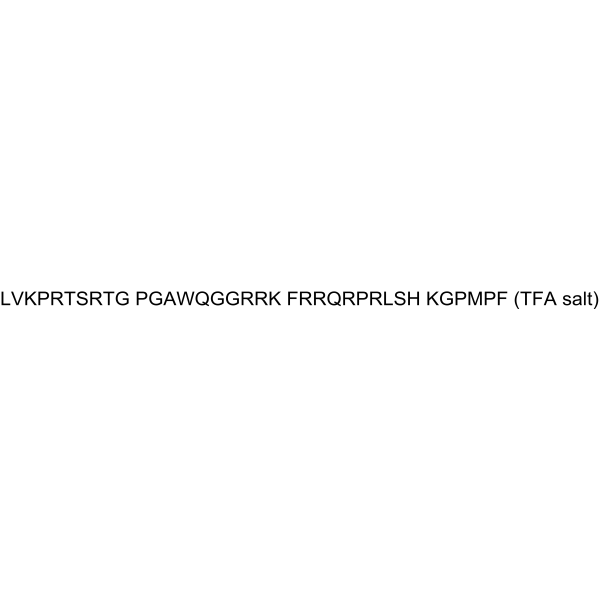
-
- HY-P4292
-
|
|
HIV
Amino Acid Derivatives
|
Infection
|
|
H-Gly-Pro-Gly-NH2 is a tripeptide that inhibits HIV-1 replication. H-Gly-Pro-Gly-NH2 inhibits the activity of HIV-1 IIIB and HIV-2 ROD with EC50 values of 35 µM and 30 µM, respectively. H-Gly Pro Gly NH2 inhibits HIV-1 replication in vitro by interfering with capsid formation. H-Gly Pro Gly NH2 has antiviral activity and can be used for virus research [2] .
|
-
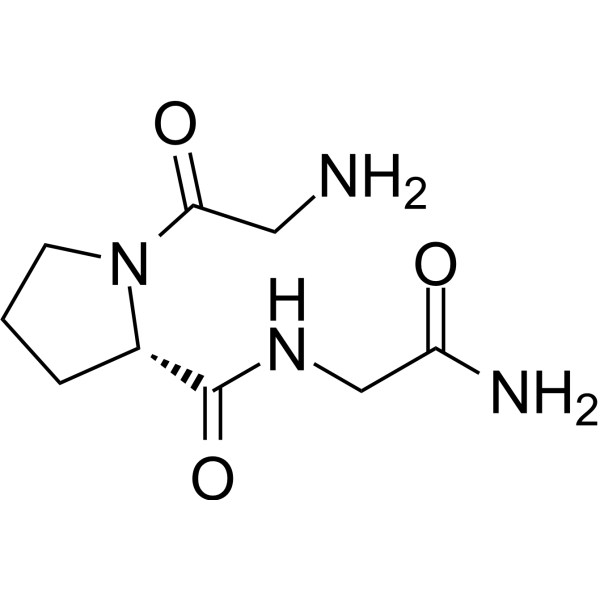
-
- HY-P1064
-
|
|
Apelin Receptor (APJ)
HIV
|
Infection
Cardiovascular Disease
Metabolic Disease
|
|
Apelin-36(human) is an endogenous orphan G protein-coupled receptor APJ agonist, with an EC50 of 20 nM. Apelin-36(human) shows high affinity to human APJ receptors expressed in HEK 293 cells (pIC50=8.61). Apelin-36 has been linked to two major types of biological activities: cardiovascular and metabolic. Apelin-36(human) inhibits the entry of some HIV-1 and HIV-2 into the NP2/CD4 cells expressing APJ [2] .
|
-
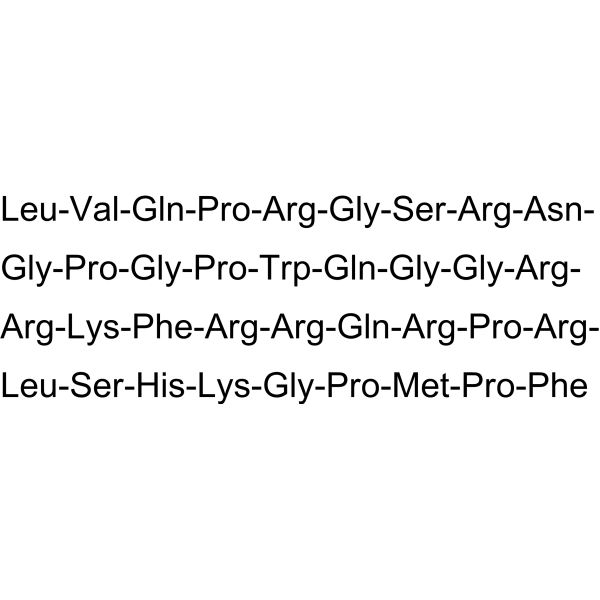
-
- HY-P1064A
-
|
|
HIV
Apelin Receptor (APJ)
|
Infection
Cardiovascular Disease
Metabolic Disease
|
|
Apelin-36(human) TFA is an endogenous orphan G protein-coupled receptor APJ agonist, with an EC50 of 20 nM. Apelin-36(human) TFA shows high affinity to human APJ receptors expressed in HEK 293 cells (pIC550=8.61). Apelin-36(human) TFA has been linked to two major types of biological activities: cardiovascular and metabolic. Apelin-36(human) TFA inhibits the entry of some HIV-1 and HIV-2 into the NP2/CD4 cells expressing APJ [2] .
|
-
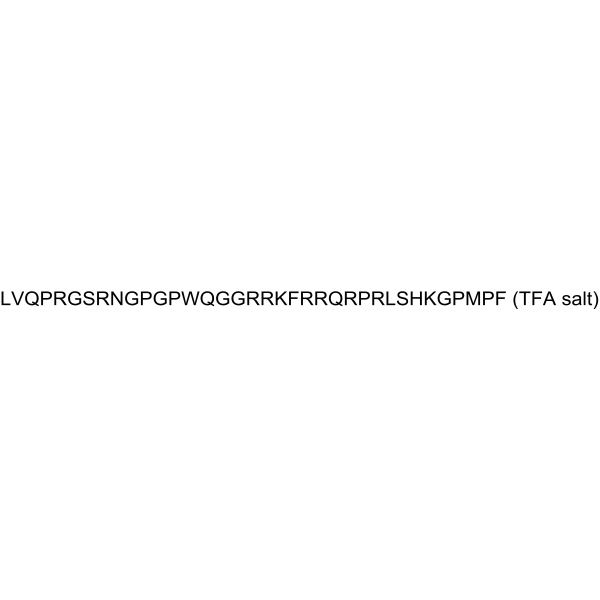
-
- HY-109014
-
|
CMX-157
|
HIV
HBV
Nucleoside Antimetabolite/Analog
|
Infection
|
|
Tenofovir exalidex (CMX157) is a lipid conjugate of the acyclic nucleotide analog Tenofovir with activity against both wild-type and antiretroviral drug-resistant HIV strains, including multidrug nucleoside/nucleotide analog-resistant viruses. Tenofovir exalidex is active against all major subtypes of HIV-1 and HIV-2 in fresh human PBMCs and against all HIV-1 strains evaluated in monocyte-derived macrophages, with EC50s ranging between 0.2 and 7.2 nM. CMX157 is orally available and has no apparent toxicity. Tenofovir exalidex also shows antiviral activity against HBV [2] .
|
-
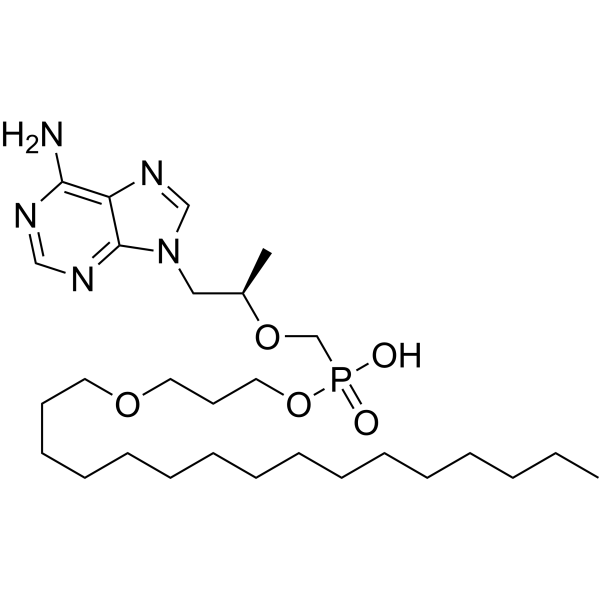
-
- HY-19314A
-
|
RO-0622 hydrochloride; FNC hydrochloride
|
Reverse Transcriptase
HIV
HBV
HCV
|
Infection
|
|
Azvudine (RO-0622) hydrochloride is a potent nucleoside reverse transcriptase inhibitor (NRTI), with antiviral activity on HIV, HBV and HCV. Azvudine hydrochloride exerts highly potent inhibition on HIV-1 (EC50s ranging from 0.03 to 6.92 nM) and HIV-2 (EC50s ranging from 0.018 to 0.025 nM). Azvudine hydrochloride inhibits NRTI-resistant viral strains . Azvudine (hydrochloride) is a click chemistry reagent, it contains an Azide group and can undergo copper-catalyzed azide-alkyne cycloaddition reaction (CuAAc) with molecules containing Alkyne groups. Strain-promoted alkyne-azide cycloaddition (SPAAC) can also occur with molecules containing DBCO or BCN groups.
|
-
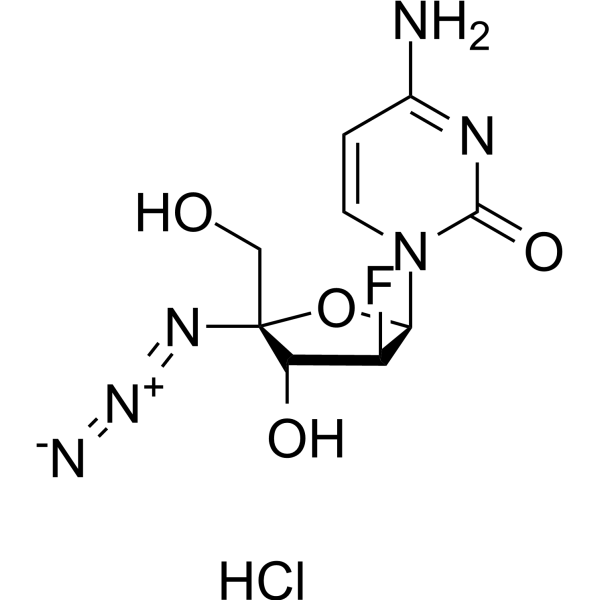
-
- HY-19314
-
|
RO-0622; FNC
|
Reverse Transcriptase
HIV
HBV
HCV
|
Infection
|
|
Azvudine (RO-0622) is a potent nucleoside reverse transcriptase inhibitor (NRTI), with antiviral activity on HIV, HBV and HCV. Azvudine exerts highly potent inhibition on HIV-1 (EC50s ranging from 0.03 to 6.92 nM) and HIV-2 (EC50s ranging from 0.018 to 0.025 nM). Azvudine inhibits NRTI-resistant viral strains . Azvudine is a click chemistry reagent, itcontains an Azide group and can undergo copper-catalyzed azide-alkyne cycloaddition reaction (CuAAc) with molecules containing Alkyne groups. Strain-promoted alkyne-azide cycloaddition (SPAAC) can also occur with molecules containing DBCO or BCN groups.
|
-
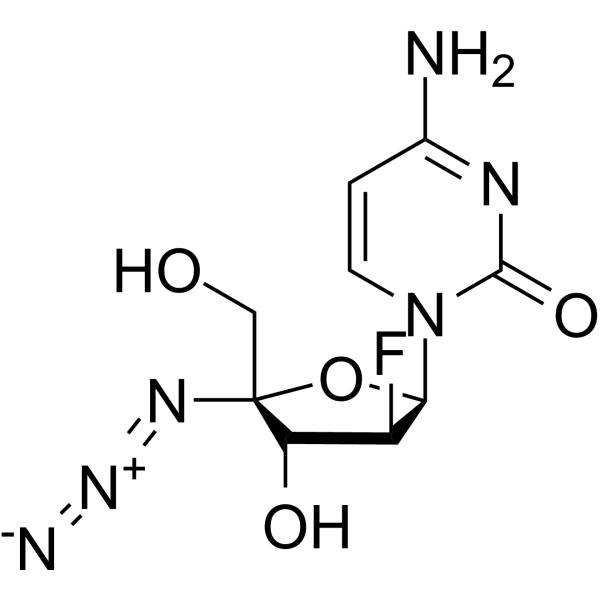
-
- HY-P2200
-
|
BMY-29304
|
HIV
Antibiotic
|
Infection
Inflammation/Immunology
|
|
Siamycin I (BMY-29304), a 21-residue tricyclic peptide, is a secondary metabolite in actinomycetes. Siamycin I is a HIV fusion inhibitor with ED50s of 0.05 to 5.7 μM for acute HIV type 1 (HIV-1) and HIV-2 infections. Siamycin I inhibits the gelatinase and gelatinase biosynthesis-activating pheromone (GBAP) signaling via the FsrC-FsrA two-component regulatory system in a noncompetitive manner. Siamycin I suppresses the expression of both fsrBDC and gelE-sprE transcripts. Siamycin I, a lasso peptide, interacts with lipid II and inhibits cell wall biosynthesis. Siamycin I, an antibiotic, has the potential for enterococcal infections research [2] .
|
-
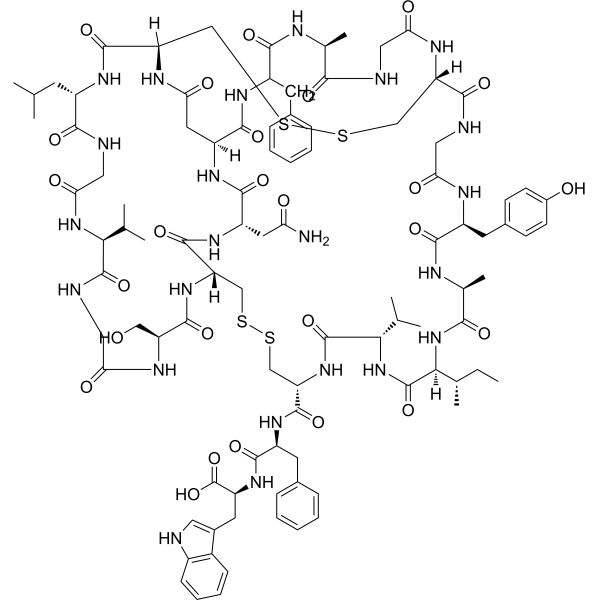
-
- HY-14740
-
|
GS-9137; JTK-303; D06677
|
HIV Integrase
HIV
|
Infection
|
|
Elvitegravir (GS-9137; JTK-303; D06677) is an HIV integrase inhibitor for HIV-1IIIB, HIV-2EHO and HIV-2ROD with IC50 of 0.7 nM, 2.8 nM and 1.4 nM, respectively.
|
-

-
- HY-14740S
-
|
GS-9137-d8; JTK-303-d8; D06677-d8
|
Isotope-Labeled Compounds
HIV Integrase
HIV
|
Infection
|
|
Elvitegravir-d8 is deuterium labeled Elvitegravir. Elvitegravir (GS-9137; JTK-303; D06677) is an HIV integrase inhibitor for HIV-1IIIB, HIV-2EHO and HIV-2ROD with IC50 of 0.7 nM, 2.8 nM and 1.4 nM, respectively.
|
-
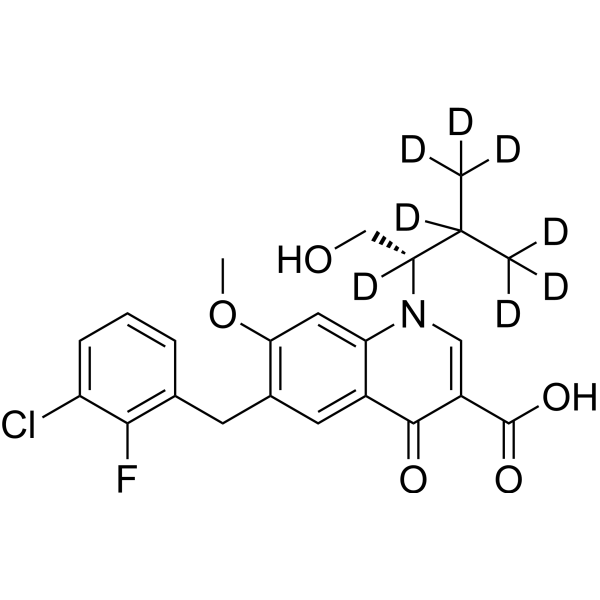
-
- HY-14740R
-
|
|
HIV Integrase
HIV
|
Infection
|
|
Elvitegravir (Standard) is the analytical standard of Elvitegravir. This product is intended for research and analytical applications. Elvitegravir (GS-9137; JTK-303; D06677) is an HIV integrase inhibitor for HIV-1IIIB, HIV-2EHO and HIV-2ROD with IC50 of 0.7 nM, 2.8 nM and 1.4 nM, respectively.
|
-

-
- HY-161047
-
|
|
HIV
|
Infection
|
|
Antiviral agent 45 (compound 9a) is an antiviral agent. Antiviral agent 45 inhibits HIV-1 andHIV-2 with IC50s of 35 and 3.1 nM, respectively .
|
-
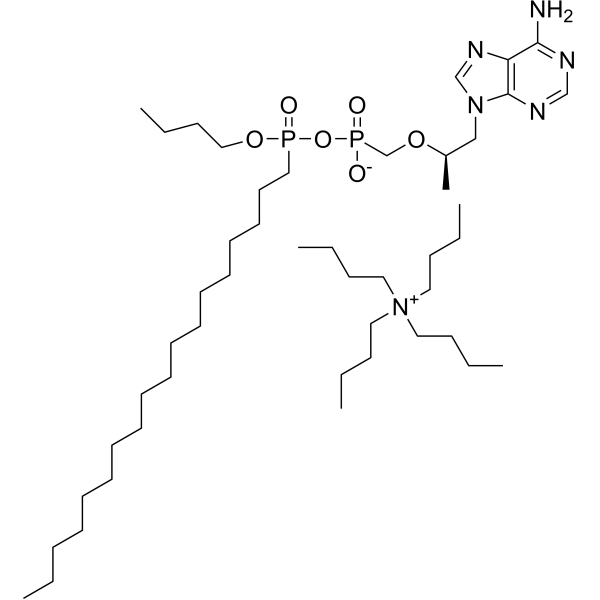
-
- HY-107760
-
-

-
- HY-107760A
-
-
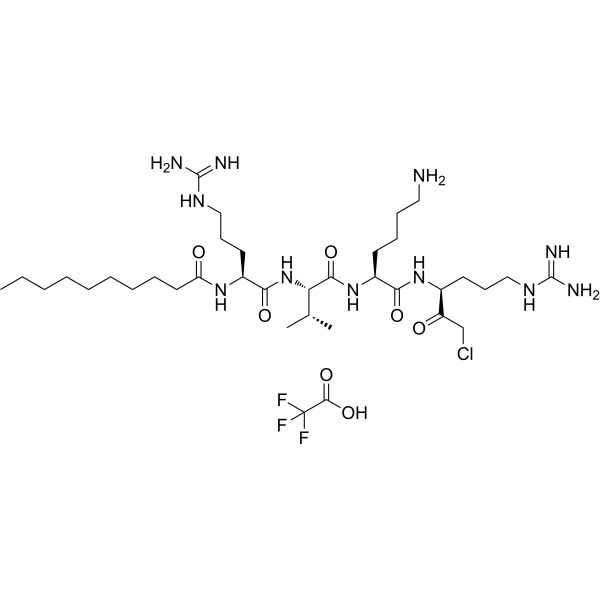
-
- HY-105268
-
|
CS-92
|
HIV
Reverse Transcriptase
Nucleoside Antimetabolite/Analog
|
Infection
|
|
AzddMeC (CS-92) is an antiviral nucleoside analogue and a potent potent, selective and orally active HIV-1 reverse transcriptase and HIV-1 replication inhibitor. In HIV-1-infected human PBM cells and HIV-1-infected human macrophages, the EC50 values of AzddMeC are 9 nM and 6 nM, respectively [2]. AzddMeC is a click chemistry reagent, it contains an Azide group and can undergo copper-catalyzed azide-alkyne cycloaddition reaction (CuAAc) with molecules containing Alkyne groups. Strain-promoted alkyne-azide cycloaddition (SPAAC) can also occur with molecules containing DBCO or BCN groups.
|
-
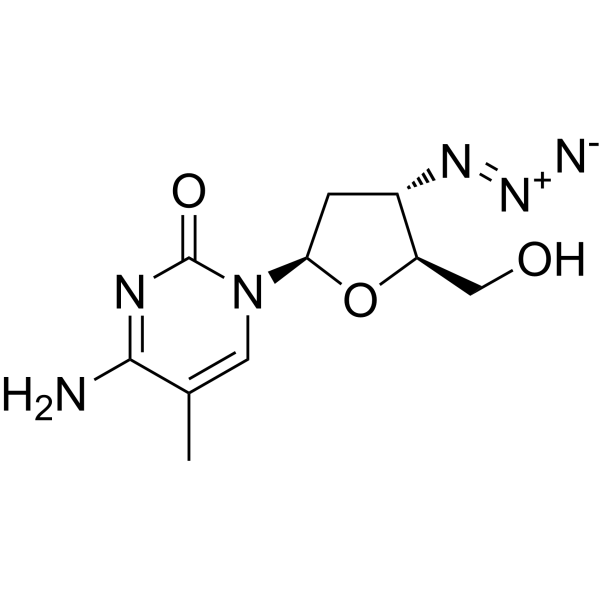
| Cat. No. |
Product Name |
Target |
Research Area |
-
- HY-P1065
-
|
|
Apelin Receptor (APJ)
HIV
|
Infection
Cardiovascular Disease
Metabolic Disease
|
|
Apelin-36(rat, mouse) is an endogenous orphan G protein-coupled receptor APJ agonist. Apelin-36(rat, mouse) binds to APJ receptors with an IC50 of 5.4 nM, and potently inhibits cAMP production with an EC50 of 0.52 nM. Apelin-36(rat, mouse) blocks entry of some HIV-1 and HIV-2 strains into NP-2/CD4 cells expressing APJ [2].
|
-
- HY-P1066
-
|
|
Apelin Receptor (APJ)
HIV
|
Infection
|
|
Apelin-17(human, bovine) is an endogenous orphan G protein-coupled receptor APJ agonist. Apelin-17(human, bovine) binds to human APJ receptors expressed in HEK 293 cells (pIC50=9.02). Apelin-17(human, bovine) inhibits the entry of some HIV-1 and HIV-2 into the NP2/CD4 cells expressing APJ [2] .
|
-
- HY-P4352
-
|
|
HIV
|
Others
|
|
HIV-2 Peptide is a polypeptide that can be found by peptide screening. Peptide screening is a research tool that pools active peptides primarily by immunoassay. Peptide screening can be used for protein interaction, functional analysis, epitope screening, especially in the field of agent research and development .
|
-
- HY-P3980
-
|
|
HIV Protease
|
Infection
|
|
HIV-1, HIV-2 Protease Substrate is the substrate of HIV-1, HIV-2 protease. And there are 4 residues for conservative substitutions of the substrate binding residues of HIV-1 and HIV-2 protease .
|
-
- HY-P1066A
-
|
|
HIV
Apelin Receptor (APJ)
|
Infection
|
|
Apelin-17(human, bovine) TFA is an endogenous orphan G protein-coupled receptor APJ agonist. Apelin-17(human, bovine) TFA binds to human APJ receptors expressed in HEK 293 cells (pIC50=9.02). Apelin-17(human, bovine) TFA inhibits the entry of some HIV-1 and HIV-2 into the NP2/CD4 cells expressing APJ [2] .
|
-
- HY-P1065A
-
|
|
HIV
Apelin Receptor (APJ)
|
Infection
Cardiovascular Disease
Metabolic Disease
|
|
Apelin-36(rat, mouse) TFA is an endogenous orphan G protein-coupled receptor APJ agonist. Apelin-36(rat, mouse) TFA binds to APJ receptors with an IC50 of 5.4 nM, and potently inhibits cAMP production with an EC50 of 0.52 nM. Apelin-36(rat, mouse) TFA blocks entry of some HIV-1 and HIV-2 strains into NP-2/CD4 cells expressing APJ [2].
|
-
- HY-P4292
-
|
|
HIV
Amino Acid Derivatives
|
Infection
|
|
H-Gly-Pro-Gly-NH2 is a tripeptide that inhibits HIV-1 replication. H-Gly-Pro-Gly-NH2 inhibits the activity of HIV-1 IIIB and HIV-2 ROD with EC50 values of 35 µM and 30 µM, respectively. H-Gly Pro Gly NH2 inhibits HIV-1 replication in vitro by interfering with capsid formation. H-Gly Pro Gly NH2 has antiviral activity and can be used for virus research [2] .
|
-
- HY-P1064
-
|
|
Apelin Receptor (APJ)
HIV
|
Infection
Cardiovascular Disease
Metabolic Disease
|
|
Apelin-36(human) is an endogenous orphan G protein-coupled receptor APJ agonist, with an EC50 of 20 nM. Apelin-36(human) shows high affinity to human APJ receptors expressed in HEK 293 cells (pIC50=8.61). Apelin-36 has been linked to two major types of biological activities: cardiovascular and metabolic. Apelin-36(human) inhibits the entry of some HIV-1 and HIV-2 into the NP2/CD4 cells expressing APJ [2] .
|
-
- HY-P1064A
-
|
|
HIV
Apelin Receptor (APJ)
|
Infection
Cardiovascular Disease
Metabolic Disease
|
|
Apelin-36(human) TFA is an endogenous orphan G protein-coupled receptor APJ agonist, with an EC50 of 20 nM. Apelin-36(human) TFA shows high affinity to human APJ receptors expressed in HEK 293 cells (pIC550=8.61). Apelin-36(human) TFA has been linked to two major types of biological activities: cardiovascular and metabolic. Apelin-36(human) TFA inhibits the entry of some HIV-1 and HIV-2 into the NP2/CD4 cells expressing APJ [2] .
|
-
- HY-P2200
-
|
BMY-29304
|
HIV
Antibiotic
|
Infection
Inflammation/Immunology
|
|
Siamycin I (BMY-29304), a 21-residue tricyclic peptide, is a secondary metabolite in actinomycetes. Siamycin I is a HIV fusion inhibitor with ED50s of 0.05 to 5.7 μM for acute HIV type 1 (HIV-1) and HIV-2 infections. Siamycin I inhibits the gelatinase and gelatinase biosynthesis-activating pheromone (GBAP) signaling via the FsrC-FsrA two-component regulatory system in a noncompetitive manner. Siamycin I suppresses the expression of both fsrBDC and gelE-sprE transcripts. Siamycin I, a lasso peptide, interacts with lipid II and inhibits cell wall biosynthesis. Siamycin I, an antibiotic, has the potential for enterococcal infections research [2] .
|
-
- HY-107760A
-
| Cat. No. |
Product Name |
Category |
Target |
Chemical Structure |
-
- HY-N10776
-
-

-
- HY-130050
-
|
BBM-928 A
|
Structural Classification
Microorganisms
Antibiotics
Source classification
|
Antibiotic
HIV
|
|
Luzopeptin A (BBM-928 A) is an actinoleukin-like antitumor antibiotic. Luzopeptin A is a bifunctional DNA intercalator which can interact with isolated DNA molecules. Luzopeptin A induces an unwinding-rewinding process of the closed superhelical PM2 DNA. Luzopeptin A is active against HIV-1 and HIV-2 reverse transcriptase with IC50s of 7 nM and 68 nM for HIV-1 RT and HIV-2 RT, respectively [2].
|
-

| Cat. No. |
Compare |
Product Name |
Species |
Source |
Compare Products
|
| Products |
|
| Cat. No. |
|
| Species |
|
| Source |
|
| Tag |
|
| Accession |
|
| Gene ID |
|
| Molecular Weight |
|
| Purity |
|
| Endotoxin Level |
|
| Biological Activity |
|
| Appearance |
|
| Formulation |
|
| Storage & Stability |
|
| Shipping |
|
| Free Sample |
Yes
No
|
| Size |
* This product has been "discontinued".
Optimized version of product available:
|
| Cat. No. |
Product Name |
Chemical Structure |
-
- HY-10046S
-
|
|
|
Plerixafor-d4 is the deuterium labeled Plerixafor. Plerixafor (AMD 3100) is a selective CXCR4 antagonist with an IC50 of 44 nM. Plerixafor, an immunostimulant and a hematopoietic stem cell (HSC) mobilizer, is an allosteric agonist of CXCR7. Plerixafor inhibits HIV-1 and HIV-2 replication with an EC50 of 1-10 nM[1][2][3][4][7].
|
-

-
- HY-B0116S
-
|
|
|
Stavudine-d4 is the deuterium labeled Stavudine. Stavudine (d4T) is an orally active nucleoside reverse transcriptase inhibitor (NRTI). Stavudine has activity against HIV-1 and HIV-2. Stavudine also inhibits the replication of mitochondrial DNA (mtDNA). Stavudine reduces NLRP3 inflammasome activation and modulates Amyloid-β autophagy. Stavudine induces apoptosis[1][2][3][4].
|
-

-
- HY-14740S
-
|
|
|
Elvitegravir-d8 is deuterium labeled Elvitegravir. Elvitegravir (GS-9137; JTK-303; D06677) is an HIV integrase inhibitor for HIV-1IIIB, HIV-2EHO and HIV-2ROD with IC50 of 0.7 nM, 2.8 nM and 1.4 nM, respectively.
|
-

| Cat. No. |
Product Name |
|
Classification |
-
- HY-16776
-
|
Festinavir; BMS-986001; OBP-601
|
|
Alkynes
|
|
Censavudine (OBP-601; BMS-986001), a nucleoside analog, is a nucleoside reverse transcriptase inhibitor. Censavudine is a potent HIV inhibitor with EC50 ranges from 30 nM to 81 nM and 450 nM to 890 nM for HIV-2 and HIV-1, respectively [2]. Censavudine is a click chemistry reagent, it contains an Alkyne group and can undergo copper-catalyzed azide-alkyne cycloaddition (CuAAc) with molecules containing Azide groups.
|
-
- HY-19314A
-
|
RO-0622 hydrochloride; FNC hydrochloride
|
|
Azide
|
|
Azvudine (RO-0622) hydrochloride is a potent nucleoside reverse transcriptase inhibitor (NRTI), with antiviral activity on HIV, HBV and HCV. Azvudine hydrochloride exerts highly potent inhibition on HIV-1 (EC50s ranging from 0.03 to 6.92 nM) and HIV-2 (EC50s ranging from 0.018 to 0.025 nM). Azvudine hydrochloride inhibits NRTI-resistant viral strains . Azvudine (hydrochloride) is a click chemistry reagent, it contains an Azide group and can undergo copper-catalyzed azide-alkyne cycloaddition reaction (CuAAc) with molecules containing Alkyne groups. Strain-promoted alkyne-azide cycloaddition (SPAAC) can also occur with molecules containing DBCO or BCN groups.
|
-
- HY-19314
-
|
RO-0622; FNC
|
|
Azide
|
|
Azvudine (RO-0622) is a potent nucleoside reverse transcriptase inhibitor (NRTI), with antiviral activity on HIV, HBV and HCV. Azvudine exerts highly potent inhibition on HIV-1 (EC50s ranging from 0.03 to 6.92 nM) and HIV-2 (EC50s ranging from 0.018 to 0.025 nM). Azvudine inhibits NRTI-resistant viral strains . Azvudine is a click chemistry reagent, itcontains an Azide group and can undergo copper-catalyzed azide-alkyne cycloaddition reaction (CuAAc) with molecules containing Alkyne groups. Strain-promoted alkyne-azide cycloaddition (SPAAC) can also occur with molecules containing DBCO or BCN groups.
|
-
- HY-105268
-
|
CS-92
|
|
Azide
|
|
AzddMeC (CS-92) is an antiviral nucleoside analogue and a potent potent, selective and orally active HIV-1 reverse transcriptase and HIV-1 replication inhibitor. In HIV-1-infected human PBM cells and HIV-1-infected human macrophages, the EC50 values of AzddMeC are 9 nM and 6 nM, respectively [2]. AzddMeC is a click chemistry reagent, it contains an Azide group and can undergo copper-catalyzed azide-alkyne cycloaddition reaction (CuAAc) with molecules containing Alkyne groups. Strain-promoted alkyne-azide cycloaddition (SPAAC) can also occur with molecules containing DBCO or BCN groups.
|
Your information is safe with us. * Required Fields.
Inquiry Information
- Product Name:
- Cat. No.:
- Quantity:
- MCE Japan Authorized Agent:


















































